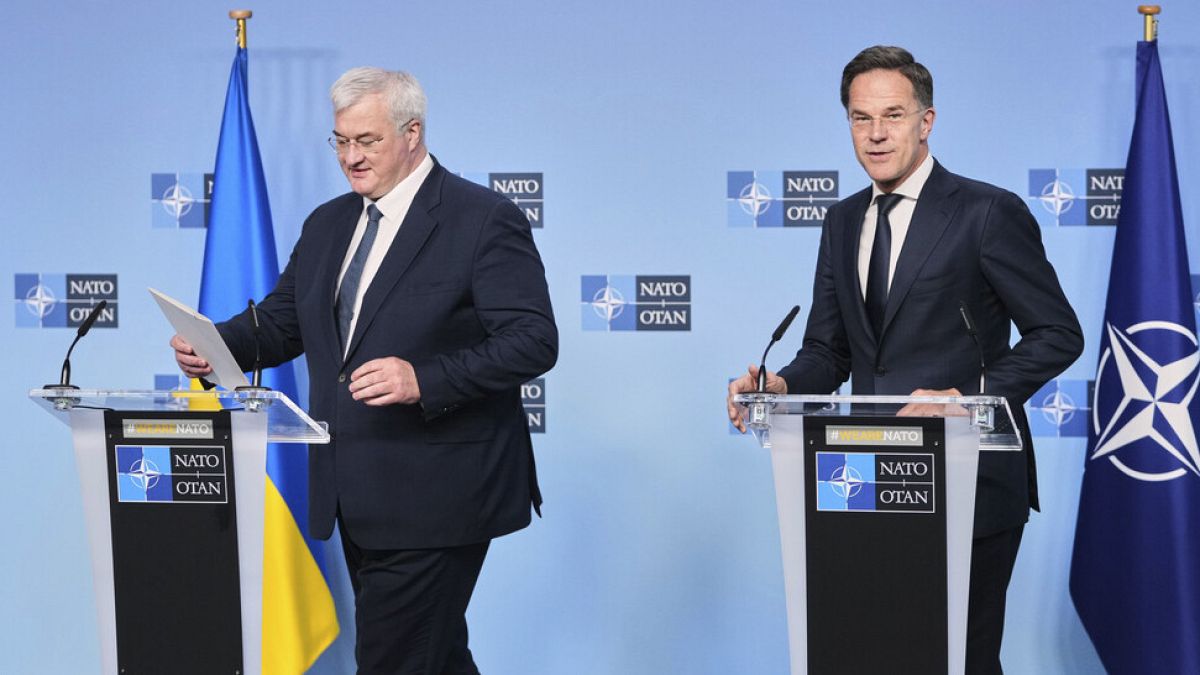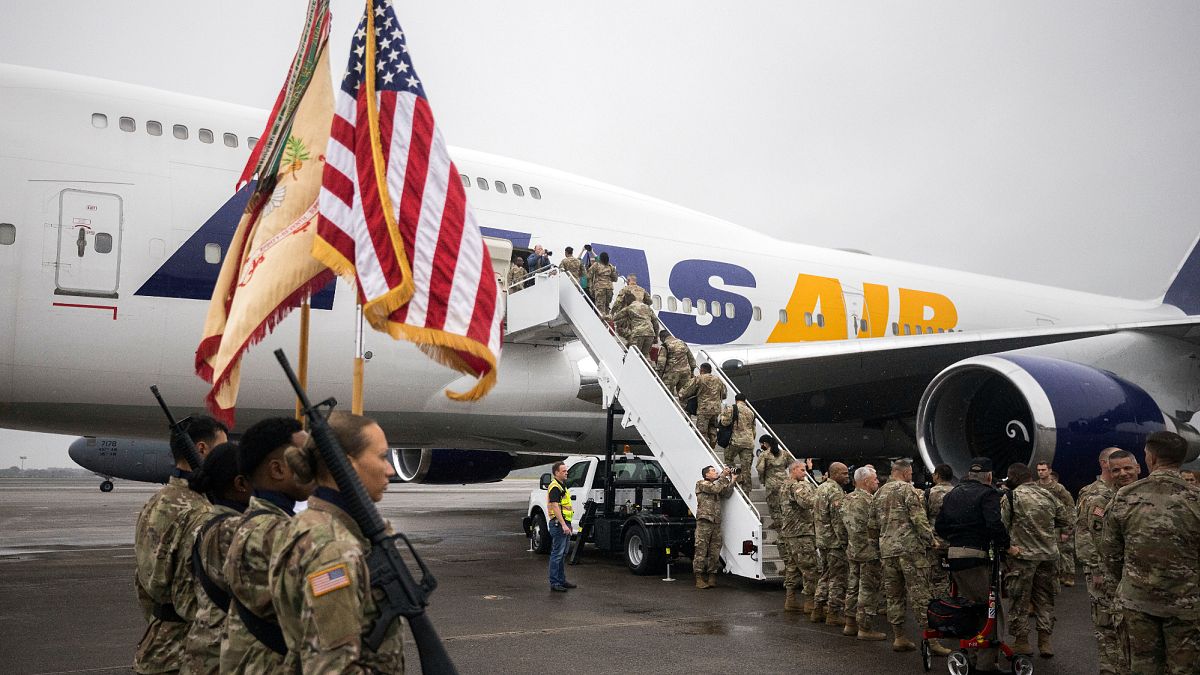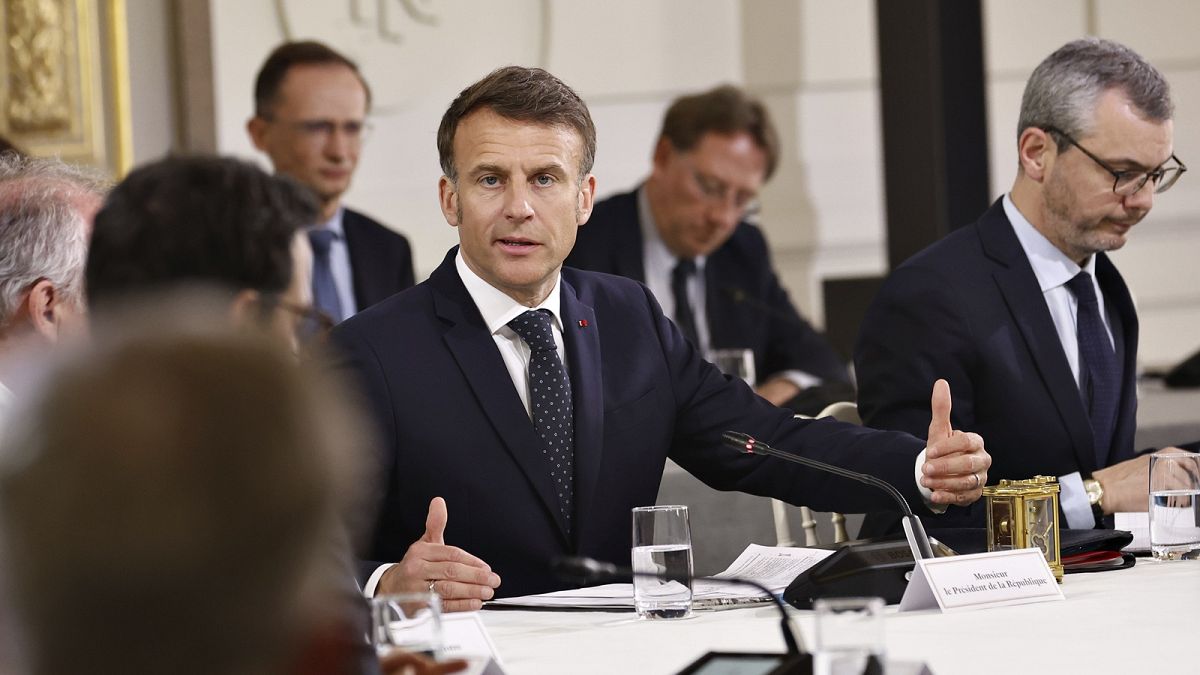Ukraine has a new way of countering Moscow's increased use of Shahed drones in mass attacks — redirecting them back to Russia or into the airspace of Kremlin-friendly Belarus.
While Moscow might have been producing more drones to attack Ukraine, Kyiv has found a way to crash them or send them back where they came from.
On Sunday night, Russian forces launched 110 Shahed drones and other decoys against Ukraine. Some 52 of them were shot down by Ukraine's air defence forces, while 50 were deemed "lost" — not shot down deliberately by the air defence, and they did not reach their intended targets.
So where did more than four dozen drones disappear to?
“Basically, what Ukraine is doing is spoofing. Meaning they are feeding in false GPS targets to these Shahed — or in Russian terms, Geran-2 drones — to make them veer off course," John Hardie, deputy director of the Russia Program at the Foundation for Defense of Democracies, explained.
"The drones have a system that's supposed to prevent jamming. But what these are doing is kind of sneaking in and not letting the drone know that the targets are being changed. It's tricking it to going in the wrong direction," Hardie told Euronews.
This is possible because of improved electronic warfare interference tactics. The number of Shahed or decoy drones reported "lost" due to Ukrainian electronic warfare (EW) interference increased significantly between October and November, the Washington-based Institute for the Study of War think tank (ISW) said.
During the Russian attack on 2 October, Ukraine directly shot down 78 drones while 23 were reported as "lost," representing 22% of the total 105 launched by Russia against Ukraine during the overnight strike.
Two months later, on Monday, 45% of Russian drones went missing due to Ukrainian EW interference. Some of it is down to an electronic defence system the Ukrainian army calls Pokrova, meaning "veil of protection", first mentioned by former top general Valerii Zaluzhny.
"In the Orthodox tradition, Pokrova refers to a 10th-century event where the Virgin Mary is said to have cast her protective veil over the city of Constantinople. So you can see the symbolism there," Hardie said.
"I think the system is probably improved since then, as the percentage of these Russian drones that Ukraine claims to be spoofing has increased over time."
But this is not the only system Ukraine is using, Hardie explained.
"Kyiv also has systems of distributed sensors that feed into tablets that belong to these mobile anti-Shahed teams, often trucks with machine guns mounted on them that are able to destroy these Shahed drones on the cheap," he said.
What goes around comes around
Apart from getting them grounded or "lost," Ukrainian EW can also redirect Russian drones back to Russia or, in some cases — the Kremlin-friendly Belarus.
Belarusian independent monitoring group Hajun Project told Euronews that "systematic flights of UAVs into Belarus" began on 11 July, and since then, the number of Russian drones redirected into Belarus’ airspace has increased each month.
“An increase in the number of drone flights into Belarus is gradual," Hajun Project said.
"For example, this is monthly data: July — nine drones, August — 12 drones, September — 27 drones, October — 49 drones, November — 151 drones. 148 of them were Shahed drones.”
Hajun Project reported on 25 November that as many as 38 Russian Shahed drones entered Belarusian airspace on that day and the day before — a record number.
Belarus scrambled jets to respond to the airspace violation, suggesting that Minsk was unprepared to receive errant Russian drones and that Moscow had not anticipated the impacts of Ukrainian interference or communicated them to Belarus in advance, according to the ISW.
Supporting this suggestion, the Hajun Project added that the duty aviation of the Belarusian Air Force occasionally but not always flies to the southeast of the country when the drones are flying into Belarus massively.
However, the details and information on these cases are not public knowledge and often remain unreported.
“On October 3, one of the drones crashed in Kalinkavichy. It was caught on a surveillance camera, and the video was distributed in local chat rooms. The next day, (Alyaksandr) Lukashenka’s enforcers detained the owner of the house whose camera had caught the drone falling," Hajun Project said.
"This case is another example of how the 'authorities' in Belarus are trying to cover up the topic of the Shahed drones by means of repression so that there is as little information as possible," they added.
"Therefore, there is every reason to believe that there were more drone crashes in Belarus, but there is just no data on it."
But why are Russian drones being spoofed and redirected to Belarus and not to Russia, where they were launched from?
“When you spoof these drones, you kind of do it gradually. You don't want to say, you know, the target is diametrically opposite of where it's going. You kind of gradually veer them off course," Hardie explained.
"So I think that could be a reason why they're heading into Belarus rather than, say, back to Russia.”
Spoofing civilians’ smartphones
In recent weeks, Ukrainian social media users have posted screenshots of their location on map apps showing up inside Russian or Belarusian territory.
In response, the General Staff of Ukraine's Armed Forces issued a warning that electronic warfare used to repel Russian air attacks may disrupt smartphone clocks and geolocation.
''It is advisable to disable the automatic time update mode in the phone and take into account that the accuracy of satellite navigation systems may be disturbed during the announcement of air alerts," the statement said.
It has become more common for Russian forces to launch between 80 to 100 or even more Shahed and decoy drones as part of their larger strike packages.
In November alone, Russia launched a total of 347 missiles as well as over 2,500 Shahed-type attack drones at Ukraine, President Volodymyr Zelenskyy said.
The attacks have been more massive because Russia has ramped up its domestic production of Shahed-type drones, the ISW explained.
Hardie added that Moscow has also made significant modifications to its UAVs in an attempt to avoid jamming and spoofing by Ukrainian electronic warfare.
"Since starting their own production within Russia, they have made a lot of different modifications to the guidance and to the warhead. With regard to guidance that they installed, the system called the Kometa M, which is a jam-resistant GNSS receiver," he explained.
"But whereas this system can detect attempted jamming, spoofing is more subtle."

 3 months ago
33
3 months ago
33






 We deliver critical software at unparalleled value and speed to help your business thrive
We deliver critical software at unparalleled value and speed to help your business thrive






 English (US) ·
English (US) ·